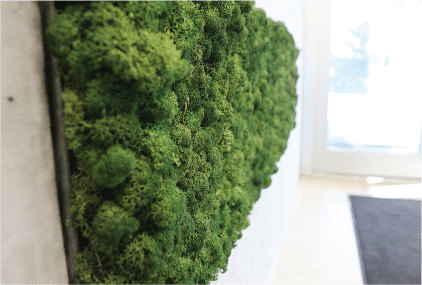Biophilic design enhances the connection between nature and the built environment, leading to improved employee well-being and productivity. This article explores effective strategies for integrating biophilic elements into office spaces.
Utilizing Natural Light
Exposure to natural light boosts mood and energy levels.
Maximizing natural light in the office can be achieved by designing layouts that feature large windows and open spaces. Daylight has been shown to reduce the need for artificial lighting, which can lower energy costs. Furthermore, integrating light shelves and reflective surfaces can help distribute light deeper into the workspace. Employees who work in well-lit environments tend to exhibit increased job satisfaction and improved focus. Therefore, placing workstations near windows can significantly enhance overall workspace wellness.
Incorporating Outdoor Views
Views of nature can significantly decrease stress levels.
Designing an office space that offers views of greenery or outdoor landscapes can contribute to reducing employee stress. Research indicates that even fleeting glimpses of nature can elevate mood and lower anxiety. Architects and designers can strategically position workstations to capture external views of parks, gardens, or natural landscapes, thereby promoting a sense of tranquility. Moreover, integrating glass walls can blur the lines between indoors and outdoors, enhancing the visual connection to nature.
Adding Indoor Plants
Indoor plants improve air quality and workplace aesthetics.
Incorporating a variety of indoor plants can not only uplift the aesthetic appeal of an office but also improve air quality. Studies have shown that plants can reduce pollutants and increase humidity, creating a healthier work environment. Popular choices include snake plants, peace lilies, and pothos, which require minimal maintenance. Employees often report feeling more relaxed and focused when in the presence of greenery, and the act of caring for plants can foster a nurturing atmosphere within the team.
Creating Natural Materials
Using natural materials fosters a sense of connection to the environment.
Incorporating materials like wood, stone, and natural fabrics can enhance the sensory experience of an office space. These materials resonate with biophilic principles, creating a tactile connection to nature. The textures and warmth of natural elements can evoke feelings of comfort and well-being, which are essential for fostering creativity and collaboration among employees. Companies should consider sustainable sourcing to further align their design choices with environmental values.
Implementing Water Features
Water features promote relaxation and improve acoustics.
Adding water features, such as fountains or aquariums, can create a calming atmosphere within office spaces. The sound of flowing water is known to reduce stress and provide a sense of serenity, contributing to a productive work environment. Additionally, well-placed water features can help mask unwanted background noise, creating a more pleasant acoustic setting. When designing these features, it’s important to consider appropriate sizes and placements to enhance visibility without overwhelming the space.
Incorporating Biophilic Art
Art depicting natural elements can evoke positive emotions.
Artworks that feature natural landscapes or organic shapes can significantly uplift the aesthetic of an office. These pieces serve as a reminder of nature, fostering a sense of connection among employees. Biophilic art installations can be used in reception areas, meeting rooms, and communal spaces to spark conversations and enhance creativity. Furthermore, local artists can be engaged to create site-specific works that resonate with the companys values and geographical context.
Designing Flexible Spaces
Flexible workspace design supports collaboration and well-being.
Creating adaptable spaces that cater to various work styles can enhance employee satisfaction. Biophilic design principles can be effectively integrated into these flexible work environments, allowing for the inclusion of natural elements while also accommodating diverse tasks. Spaces can be outfitted with movable partitions, greenery, and comfortable furniture that promotes relaxation. Such environments encourage teamwork while still providing areas for quiet reflection, thereby improving productivity and employee morale.
Incorporating biophilic design into office spaces is essential for fostering a healthy, productive workplace. By blending natural elements and innovative design, companies can enhance employee well-being while also promoting sustainability.

